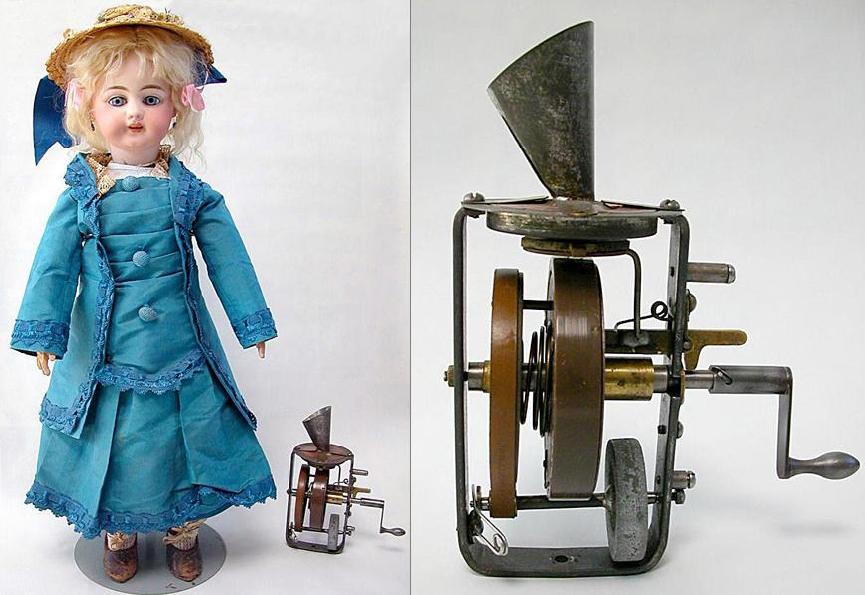
When studying history’s most famous creators, we must never forget that they always produced failures as well as successes, and often failures as impressive as their successes. Take Thomas Edison, widely regarded as the great American inventor for his work on the light bulb, the movie camera, and the phonograph. We all know about those achievements, all of which shaped technologies which went on to near-universal use, but have you heard of Edison’s still-pioneering but rather less well-known work in the field of talking dolls?
Many of us in the past few generations grew up with talking dolls of one kind or another. But had we been children in 1890, we might have grown up with the very first talking dolls, for which Edison designed an internal mechanism that played one of several wax cylinders pre-recorded with various child-oriented songs, prayers, and nursery rhymes. Or rather, we might have grown up with them if we came from wealthy families: they cost between $10 and $20 in 1890 dollars, or up to $526 in today’s dollars.
And even at that price, Edison’s talking dolls provided not just the lowest of lo-fi listening experiences, but resoundingly creepy ones at that. “The public reacted as one does when confronted with a grandmother’s massive doll collection: You averted your eyes in fear,” writes PBS’ Joshua Barajas. “After six weeks into production, the dolls were deemed too scary and pulled from the market, the New York Times reported.”

But now, thanks to optical audio-scanning technology unimaginable in Edison’s day, we can hear the dolls’ renditions of “Twinkle, Twinkle, Little Star,” “Hickory, Dickory, Dock,” and — most eerily of all — “Now I Lay Me Down to Sleep” just as the children of 1890 would have heard them. But even this seriously wrongheaded-seeming product paved the way for not just the less disturbing Furbys and Teddy Ruxpins of more recent childhoods, but, given its unprecedented use of auto recordings made for entertainment purposes, the entire record industry — and, of course, the minor but robust subgenre of talking-doll horror movies.
Related Content:
Thomas Edison and Nikola Tesla Face Off in “Epic Rap Battles of History”
A Brief, Animated Introduction to Thomas Edison (and Nikola Tesla)
Thomas Edison & His Trusty Kinetoscope Create the First Movie Filmed In The US (c. 1889)
Colin Marshall writes on cities, language, Asia, and men’s style. He’s at work on a book about Los Angeles, A Los Angeles Primer, and the video series The City in Cinema. Follow him on Twitter at @colinmarshall or on Facebook.


Leave a Reply